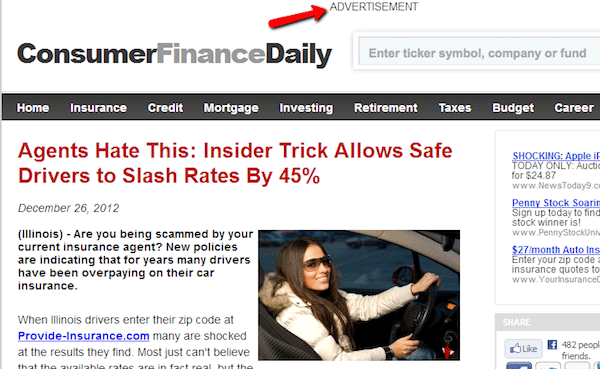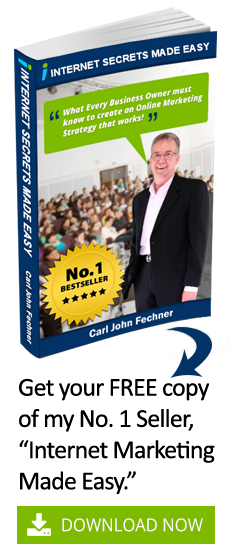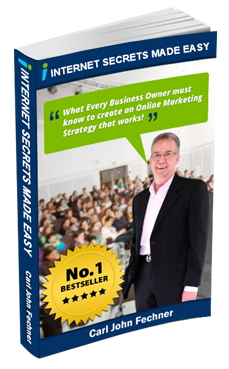 Yesterday, we’ve talked about different ways on how to write a damn good copy. Today, I’ll share another great article from Copyblogger. This article will show us different ways on how to write a damn bad copy. It’s good to know things you need to avoid, right?
Yesterday, we’ve talked about different ways on how to write a damn good copy. Today, I’ll share another great article from Copyblogger. This article will show us different ways on how to write a damn bad copy. It’s good to know things you need to avoid, right?
It’s obvious that creativity is an essential part of being a remarkable writer.
But when a results-oriented writer says “creative” and an image-oriented writer says “creative” you have to understand that they are talking about two completely different things.
The results-oriented writer emphasizes problem solving with clear, concise, and compelling copy (for example: How do I demonstrate that our product will solve our target customer’s problem?).
The image-oriented writer puts an emphasis on artistic, clever, or humorous copy (for example: How can I demonstrate how entertaining and crafty I am?).
A few weeks ago, I wrote about a few ways to write good copy that sells. Now, I’d like to take a few minutes to show you at least seven kinds of copy you need to avoid (with a little help from legendary copywriter John Caples).
Copywriters (and those who hire them) beware …
1. Lyrical
This is the type of copy that you see from someone who loves words. Long words in particular.
Words like jentacular (pertaining to breakfast), slubberdegullion (a filthy slobbering person), and recumbentitbus (a knockdown blow).
This is the person whose grandmother squeezed her cheeks and said, “You are our little wordsmith.” Whose English Literature cronies would stroke their soul patches and say, “I think you’re on to something. Not sure what, but you’re on to it.”
Let’s imagine she works for Black & Decker. She is asked to write sales copy for a cordless drill. It might look like this:
Wanted: a hollow place in a solid mass of hard, fibrous substance
Carpenters, with one little boring unit made from the 22nd element of the periodic table you can create a precise aperture in any piece of wood. And, behold, with the ergonomic grip zone constraining is done with amenity and gratification. Visit any one of our facilities if you are predisposed to acquiring a unit.
The only problem is this is a painful piece to read. Nobody knows what you are talking about. It is a guessing game — and your audience doesn’t have the patience to guess.
2. Sentimental
Next in line is the type of copy that sounds like it was written by a college student. One moved by sunsets. Charmed by foreign films. In love with candles, incense, and long bubble baths.
He is a copywriter with a single and solitary goal: to make you “feel” the copy. If you don’t feel the copy, then he’s failed.
Rebirth that dying relationship
He stands in the door way — a tear hangs like a sapphire from his eyelash, ready to plunge into the depths of his lonely and loveless heart. You are drinking from the cup of the dark night, confused by the decaying shadow of his love, dazed by the breath of a broken promise. When he lowers the veil on your heart, you will fling yourself into the depths of hunger and death.
Know what he’s trying to sell? Me neither.
That might work for a Nicholas Sparks novel, but never in advertising. Shoot for the straight and the simple.
3. Outlandish
This is your garden variety snake-oil salesman. The product that promises to …
… eliminate $45,000 in debt in less than 45 days …
… the DVD that swears you can look like a Russian body builder with nothing more than a chair and four minutes a day …
… the stock that — once it soars right after Groundhog Day — will make Google’s stock price look like a steal.
It’s the world of yellow highlight markers, images of jaw-dropping tax returns and promises of endless freedom to indulge in every whim.
But it’s also a world of broken dreams where you might make a mint in the short term but over time your reputation will sour.
This type of advertising betrays confidence. It does harm. It stings, and leaves a bad taste in our mouths. Sonia calls this the troll under the bridge — and it’s a sure fire way to kill conversions.
It appears when we are young and suckered into the milk-can con job at the traveling carnival. Or the Sea-Monkey hoax where you are lead to believe you will spawn little people in an aquarium — but what you end up with is just cheap fish food.
You feel stupid for falling for such tricks. You vow never to fall again. You grow a thick skin to advertising. And every honest salesman and every sincere sales page that crosses your path is viewed as a fraud.
There is a limit to credibility. A limit to what people will believe. If you cross that invisible line in your sales copy, people will shut you down.
Better to make a promise that you know your audience will believe without having to stretch their judgment. Better yet, tell the ugly truth . And then what you say after that will be easier to swallow.
4. Humorous
The problem with humorous copy is that humor is fickle. It’s a minefield. For every person who laughs at a blonde joke, you have one person who hates you for it.
Some people like deadpan humor. Others like dark humor. Some like slapstick. Still others like sarcasm. Many like bathroom humor while others want the highbrow sort.
Unless you are absolutely certain that a majority of your paying customers like dark humor, then don’t use it.
What you find funny is likely insulting to others — and that will damage the effectiveness of your copy. That’s not a risk you should be willing to take.
Of course, there are the rare exceptions like the eBay wet suit ad or the used car on Craigslist.
They went the absurd, clever, humorous route, and it paid off.
Your chances, however, are much better if you stick to clear, concise, and compelling copy. Or at the very least, avoid humor until you’re certain you are actually funny.
5. Short
Short copy — so brief that the entire advertisement could fit on the back of a business card — is bliss for those who use it.
Think cologne producers or financial institutions. Sometimes an entire page in a magazine is devoted to the name of the product, plus an alluring slogan: “Seduction is essential” or “Your money is your money.”
Nobody knows what those slogans mean. Not even the marketing director. But it’s that mystery we love.
Unfortunately, mysterious copy does not pay the bills.
It goes against the grain of tested advertising methods that have proven longer copy will virtually always outsell short copy.
A few years ago this lesson was drilled home to me during a short email exchange with John Carlton.
I had the opportunity to get a few minutes of John’s time to review a short ad I’d written.
It was an email promoting a conference. It was less than 200 words. It was a disaster — and John let me know.
He scolded me for being lazy and missing a glorious opportunity to sell the product. It was at that point that I understood what is meant when someone says, “It’s not a question of how long the copy is — but how interesting.”
6. Clever
Clever is what you get when you have a writer who thinks he is smart — smarter than the average reader — and he’s out to prove how smart he is.
So he writes the clever ad.
Clever is also what you get when you don’t have a marketing clue. Let’s say you’re an architect selling the benefits of your firm, and you write this headline:
We will make sure that your house is not square.
You meant “not cool” but, hey, look at you — you said it in a clever way! Word play! Everyone in your firm thinks you are a genius!
Unfortunately, everyone else will think you are a moron for trying to sell them a house that will one day flop over.
Few people actually read clever advertisements. They are confused by the headline, and the few who do read recognize what you are trying (and failing) to do.
If your job rides upon effective advertising, then make sure it accomplishes these four things:
- Promises to solve a meaningful problem.
- Paints a picture of what your life will be like if that problem is solved.
- Proves that you will deliver on your promise.
- Pushes the prospect to subscribe, download, donate, share or buy.
Effective content marketing builds upon the self-interest of your customer.
And when you give them the kind of content that they don’t want to delete—you won’t need clever advertising.
7. Advertorial
Once a popular and effective approach — used by some of the best copywriters in the land — the advertorial is now overused, if not flat out abused.
What exactly is an advertorial? Nothing more than an advertisement dressed up to look like a piece of news.
Here’s what I see at the bottom of an article on my local news website:

In a box clearly marked “Advertisement” there is a handful of ads that are supposed to be “news”: “Weird Illinois Loophole” or “New Policy in Illinois.”
But what looks like an editorial news piece is clearly an ad:
In the lead you have loaded language like “scammed” and “overpaying” to hit those hot buttons—so even if you miss the word ADVERTISEMENT close readers should sense this is not really meant to inform them, but persuade.
I find this approach misleading — almost sleazy — and not unlike the outlandish approach
But here’s the thing — these ads have been running for a very long time. That tells me two things:
- They are getting great click-throughs
- They are making money
The question becomes: is there a better way to be profitable? I think there is. It’s called content marketing.
Focus on your audience …
There’s one thing that all of the examples above share — a complete lack of concern for the audience they intend to reach. In each example the spotlight is put on the writer:
Look at me, I am a poet. I am funny. Clever. Mysterious!
Good copywriters, good advertising copy, and good content marketing, however, put the focus on the audience, the prospective customer. If you truly take care of your audience, they will eventually take care of you.
On my next post, I’ll share the ultimate secret in writing a great copy. Excited?
ARTICLE SOURCE: This content is syndicated news that can be used for your research, and we hope that it can help your productivity. This content is for educational purposes and is not made for any kind of commercial purposes of this blog.





